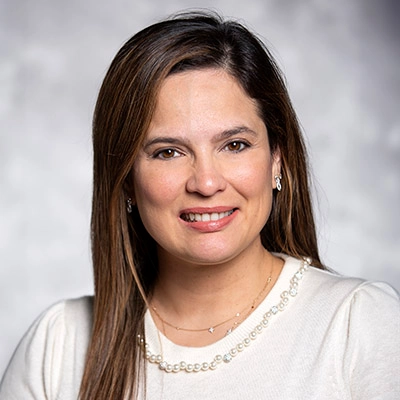In an episode of the Oncology Brothers podcast, Ticiana Leal, MD, of Winship Cancer Institute of Emory University, discussed treatment options for small cell lung cancer, as well as her own algorithms for treating limited- and extensive-stage disease, with Rahul Gosain, MD, MBA, and Rohit Gosain, MD.
Limited-stage SCLC is identified in less than a quarter of SCLC patients and, unless respiratory symptoms occur, is often discovered incidentally on computed tomography (CT) scans done for unrelated reasons, according to Dr. Leal.
Treatment Options for SCLC in the Limited Stage
Patients with T1 or T2 tumors of 5 cm or less with no nodal involvement are candidates for resection surgery followed by 4 cycles of platinum-based chemotherapy, but this includes an even smaller proportion of eligible patients. The approach requires “very good staging that includes PET [positron emission tomography]-CT, brain MRI [magnetic resonance imaging], and mediastinal staging,” Dr. Leal said.
Stereotactic body radiotherapy may be used in this population if a patient is ineligible for surgery and contraindicated for concurrent chemotherapy plus radiation therapy, but more data are needed to validate this approach.
For patients with larger tumors or nodal involvement, the standard treatment begins with concurrent chemoradiation therapy with platinum and etoposide for 4 cycles. An emerging option for SCLC follows this regimen with consolidation durvalumab, based on the PD-L1 inhibitor’s link to improved overall survival in the pivotal ADRIATIC trial.
Dr. Rahul Gosain raised the question of prophylactic cranial irradiation for limited-stage SCLC. “For the limited-stage population—where we’re really talking about curative intent therapy, and now with the results of the ADRIATIC trial showing improved survival—I think patients do need to have a full discussion with radiation oncology and medical oncology in a multidisciplinary approach about the role of PCI [prophylactic cranial irradiation] and risks and benefits,” Dr. Leal said.
Dr. Leal sequences PCI between concurrent chemoradiation and consolidation durvalumab. She added that upcoming MAVERICK data will further clarify the value of PCI versus routine MRI surveillance in the limited-stage population.
The doctors also discussed the choice between cisplatin and carboplatin. The major concern with cisplatin is acute kidney injury, though Gupta et al reported that prophylactic intravenous magnesium prior to cisplatin can reduce this risk. Dr. Leal also mentioned that exploratory analyses of ADRIATIC suggested carboplatin may actually improve outcomes versus cisplatin.
Treatment Options for SCLC in the Extensive Stage
Regarding treatment options for extensive-stage SCLC (ES-SCLC), the latest developments include front-line use of PD-1 and PD-L1 inhibitors. Adding atezolizumab or durvalumab to standard-of-care platinum-based chemotherapy improved outcomes in the IMpower133 and CASPIAN trials, respectively.
However, Dr. Leal cautioned that “we don’t have predictive biomarkers that really will help us understand who are the patients that are going to do really well with immunotherapy and make it to that 5-year [survival] mark and who are the patients that aren’t going to do that well.”
Trilaciclib, a CDK4/6 inhibitor, is sometimes used during chemotherapy for its myeloprotective effect. Dr. Leal favors using trilaciclib when rechallenging in patients who had significant problems during first-line chemotherapy—though she noted that she is rechallenging less and less given the advent of agents like lurbinectedin and tarlatamab. DeLLphi-304 findings support tarlatamab as the preferred second-line treatment option for SCLC, she said. However, treatment coordination can be challenging, so lurbinectedin remains a potential option, the doctors noted.
Patients who received front-line immunotherapy-based treatment but experience disease progression during consolidation immunotherapy may be among the most challenging cases oncologists face, Dr. Leal said. For those who progress while on durvalumab, she believes the right choice is to move on to a second-line treatment option; however, for patients who progress shortly after completing 2 years of durvalumab, rechallenging with chemotherapy plus immunotherapy could be considered.
“I think it will depend on where the field is at that point as well, depending on the shift of the new agents that come into play,” Dr. Leal said. “I’d use a new agent with a novel mechanism of action rather than purely rechallenge again.”
In closing, the doctors highlighted much-anticipated IMforte trial data on adding lurbinectedin during atezolizumab consolidation therapy in patients with ES-SCLC. The results are being presented at ASCO 2025.




